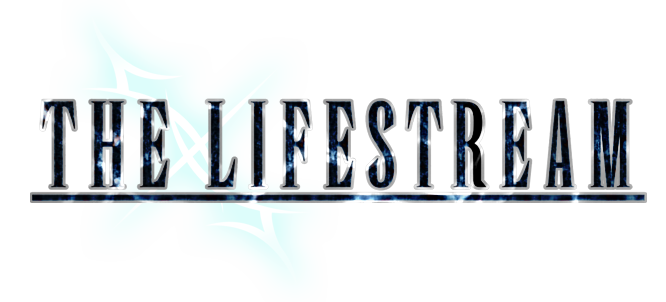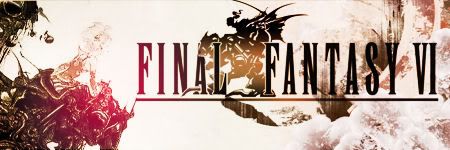Splintered
unsavory tart
Because we keep talking about finding a topic besides LTD...

I. WTF is this shit?
Final Fantasy fans is loves it dramatic villains, so much so that they tend to dominate all discussion leaving many aspects of the game otherwise forgotten, which is unfortunate. Especially considering that almost universally, Final Fantasy games starts their story pitting a couple of downtrodden, inappropriately dressed young adults against a large overarching authority, which like all good authorities, spend all their resources oppressing people, committing genocide, and kicking puppies. These said authorities and institutions are dynamic in Final Fantasy, ranging from complex organizations to simple megalomaniac kingdoms.
They embody all the things that are truly wrong with society. Sure, Kefka is a crazed personification of ultimate evil, but how many Kefkas do we see in the world today? It’s the greed, the corruption, and the moral bankruptcy of authority that seems to perpetuate our news. Global destruction for the lulz is one thing, but it is the wars, oppression, environmental destruction, and exploitation that we as a player can connect with.
This wall of text is, as you guessed it, about the authorities and institutions that the player struggles with throughout the game. This is less an essay that it is a stream of consciousness opinions about the make up and themes of these establishment. It’s also fairly limited as it will only encompass games from VI and later, and many of these looks are not as thorough as I would like because it has been years since I played them. The organizations that are presented here are the Gestahl Empire from FFVI, Shinra Electric Company from FFVII, Galbadia from FFVIII, Alexandria AND Terra from FFIX, Yevon from FFX, Archadia from FFXII, and the Sanctum from FFXIII. It would be very easy to slip in discussion about the leaders that control these organizations (Rufus Shinra, Vayne Solidor, etc) and they are important to understand why these organizations do what they do. But I would run the risk into slipping into lengthy debates on just the nature of these figureheads so I will avoid this part of the discussion.
It goes without saying that, yes, there will be spoilers for FFVI through XIII…
This part is a simple list of commonalities between the institutions in Final Fantasy. These similarities are not restricted to just Final Fantasy, many of these clichés are fairly common within all types of games and other forms of literature/media.
I had issues about the placement of this portion, simply because I figured it would be common sense to place it at the end and let this cleanly tie up all the points I made. But since this is the part of the argument I most wanted to present, and it was clear that this whole endeavor was going to become insufferably long, I placed it at the top. I fully expect this composition to change as times go on.

I. WTF is this shit?
Final Fantasy fans is loves it dramatic villains, so much so that they tend to dominate all discussion leaving many aspects of the game otherwise forgotten, which is unfortunate. Especially considering that almost universally, Final Fantasy games starts their story pitting a couple of downtrodden, inappropriately dressed young adults against a large overarching authority, which like all good authorities, spend all their resources oppressing people, committing genocide, and kicking puppies. These said authorities and institutions are dynamic in Final Fantasy, ranging from complex organizations to simple megalomaniac kingdoms.
They embody all the things that are truly wrong with society. Sure, Kefka is a crazed personification of ultimate evil, but how many Kefkas do we see in the world today? It’s the greed, the corruption, and the moral bankruptcy of authority that seems to perpetuate our news. Global destruction for the lulz is one thing, but it is the wars, oppression, environmental destruction, and exploitation that we as a player can connect with.
This wall of text is, as you guessed it, about the authorities and institutions that the player struggles with throughout the game. This is less an essay that it is a stream of consciousness opinions about the make up and themes of these establishment. It’s also fairly limited as it will only encompass games from VI and later, and many of these looks are not as thorough as I would like because it has been years since I played them. The organizations that are presented here are the Gestahl Empire from FFVI, Shinra Electric Company from FFVII, Galbadia from FFVIII, Alexandria AND Terra from FFIX, Yevon from FFX, Archadia from FFXII, and the Sanctum from FFXIII. It would be very easy to slip in discussion about the leaders that control these organizations (Rufus Shinra, Vayne Solidor, etc) and they are important to understand why these organizations do what they do. But I would run the risk into slipping into lengthy debates on just the nature of these figureheads so I will avoid this part of the discussion.
It goes without saying that, yes, there will be spoilers for FFVI through XIII…
II. Common Themes
This part is a simple list of commonalities between the institutions in Final Fantasy. These similarities are not restricted to just Final Fantasy, many of these clichés are fairly common within all types of games and other forms of literature/media.
I had issues about the placement of this portion, simply because I figured it would be common sense to place it at the end and let this cleanly tie up all the points I made. But since this is the part of the argument I most wanted to present, and it was clear that this whole endeavor was going to become insufferably long, I placed it at the top. I fully expect this composition to change as times go on.
- A. Institutions are often displayed as the initial antagonistic force until such time a greater evil is discovered or takes it over.
- vi. Soldiers from the Gestahlian Empire is the first thing you see in FFVI, and your group of rebellers face off from them the moment Terra gains her own freedom. It ends when a own general destroys the world.
- vii. Shinra Company takes the lead, as your first act is to blow up a reactor. This continues until you discover Sephiroth is alive while infiltrating Shinra’s head quarters early on.
- viii. Your first plot driven mission is an assassination of the president of the Galbadian empire. Ultimecia then takes control of Galbadia, and then eventually abandons it completely.
- ix. Alexandria starts the rampage until Garnet officially takes over. This is not the end of IX‘s bait and switch as we are lead to be believe that Terra is our next big bad institution to fight, until it is destroyed by the main antagonist Kuja.
- xii. The group mostly finds themselves at odds against the Archadian Empire throughout the game. The unique thing about this entry is that it is the only institution to maintain its role throughout the entire narrative
B. These institutions fall into two categories; neutral and evil
- 1. Otherwise neutral organizations that are hijacked by a charismatic figure. After the leader falls, they continue to exist
- VIII. Galbadia may or not fall into this category, depending on its fate after it loses both the president and Ultimecia. It is never very well explained
- IX: Alexandria is liberated after the death of Queen Brahne and making Garnet their queen.
- XIII. Archadian Empire allows for peace after Larsa comes into power with the death of his brother.
2. Inherently corrupt institutions that completely breakdown after the end or during the of the story - VI. Gestahlian Empire.
- VII. Shinra Corp, (ex-president Rufus, however, continues to fund the WRO)
- X. The religion of Yevon collapsed after the truths were revealed, although a splinter group is still around in X-2
- XIII. The Sanctum's Fal’cie (the Pulse Fal’cie however, are debatable. But they never concerned themselves with the governance of humans so it may not matter).
C. You can trace many of these institutions rise to power through the use of a new technology or power. These powers are often exploited from nature and are often neutralized at the end of the game. The tension of nature and technology is often repeated throughout the narratives
- VI: The Empire utilized Magitek to gain a militaristic advantage. They gained it through the power of Espers
- VII: Shinra utilized Mako Energy that helped them gain financial success. They gained this power through the exploitation of the life stream.
- IX: Black mages were used as manufactured soldiers created from Mist.
- XII: Dr. Cid created Manufactured Nethicite that helped spur Archadian’s conquest.
- *** Depending on how you view it, XIII’s fal’cie’s powers gave them a place in people’s lives, IX’s eidolons were the things that truly gave Alexandria and Terra an advantage, along with X’s monopoly on Summoners. I did not chose these because they are naturally occurring in the mythology.
D. The cruel actions of these groups often spawn active rebellion groups. The groups in these often have formal names, and to be on this list they must have existed as a rebellion group before the game. Thus groups naturally forming together against the opposing institution do not count (like the Pulse L'cie) or groups that are not created for the purposes of opposition (IX's Tantalus or X‘s Al bed)
- VI. The Returners fought the Gestahlian Empire
- VII. AVALANCHE fought Shinra for the planet (and revenge)
- VIII. The Forrest Owls fought for Timber’s independence
- XII. Bhujerba's Resistance- run by men masquerading as guides in Bhujerba
- XIII. The Cavalry/Wide-Area Response Brigade. Cid's Psicom division that is fighting on the inside against the Sanctum. Only their betrayal was overshadowed by Cid Raine’s own betrayal.
E. Many of these institutions have characters that are truly noble, and believe they are doing good, but still fight for the on the wrong side. They even may have infiltrated your party to betray you later. Eventually these individuals end up helping your party out, even if it meant betraying the institution.
- VI. Celes betrays the party but has a change of heart early on.
- VII. Cait Sith betrays the team and acts as a double, then triple agent. It is revealed he only works for Shinra to help the people in Midgar.
- VII. Seifer and his gang may be included, and he is the only character that would be initially a team ally, and then go to the enemy’s side. He also doesn’t help out the team at all, but is seen finally at peace at the end of the game.
- IX. Beatrix is Alexandria’s noble knight and a hard as hell boss. Her servitude is only out of extreme loyalty, but she refuses to hurt Garnet and quickly switches sides.
- XII. Larsa from Archadia, although he is never particularly against your party at any time. He is, however, still extremely loyal to Archadia, but never once fights. There are a number of neutral characters here, as Archadia was prone to struggles of power.
- XIII. Yaag Rosh does seem to understand the plights of the L‘cie but he refuses to stop pursuing them because he truly believes that without their deaths, Cucoon will suffer. He realizes the error of his ways, and redeems himself by blowing himself to stop the oncoming monsters from reaching the party. Cid Raines may also fall in this category, depending on if you believe he was an anti-hero, or a villain. Especially after his apparent revival.
F. Not everyone in the organization is working out of national pride. Institutions have a bad habit of taking away people's free will and forcing them to fight against their wishes.
- VI. Terra is enslaved using a device of Kefka's creation before the start of the game. In fact, all Espers can all in this category.
- VII. Cloud can arguably be placed in this, as he has moments of lost free will because of Shinra's experiment. However, he is more a puppet of Sephiroth than Shinra, so his place here is tentative.
- VIII. Edea is also debatable here, as she was possessed by Ultimecea and she did help from Galbadia, but it the end it wasn't that nation she was controlled by. Moombas may be a better example.
- IX. Black Mages were created for Alexandria's servitude, although once gaining self awareness, many fled.
- XII. At one point, a Viera Mrjn temporarily was under the possession of Venat.
- XIII. Many consider becoming a L'cie slavery because although they have free will, the consequence of inaction make it an impossible choice. It is a major plot point, however, that the main party, however, subverts this destiny, showing that free will can triumph. One could also argue that the Fal'cie are also subject to this.
G. Frankenstein'd: Final Fantasy empires love to experiment with technology, and being ethically amoral, tend to experiment on people. This has a tendency to backfire on them, and many times their fall can be directly, or at least significantly, tied to their own creation.
- VI. It was the Empire's Magitek experimentation help make Kefka as powerful as he was, and it was Kefka that killed Gestahl.
- VII. Although the end for Shinra probably began with the death of Rufus Shinra at the hand of the Weapons, Hojo's experiments Sephiroth was at least directly responsible for the death of the first president Shinra, and Cloud killing Scarlet and Heidger ended Shinra for good
- X. This arguably has a place here, as the system of Summoners and Guardians were not of their own making, but they did help perpetuate the system and still within the Yevon tradition. And it a summoner and guardians that brought down the religion of Yevon.
- XII. Although the Occuria may not have scientifically experimented on anyone but they did help cultivate the Raithwall line and bring them to power through means not of their own. In the end, it was the descendant Ashe that destroyed the sun shard, thus eliminating any power they can had over Ivalice
- XIII. The Fal'cie's greatest tool in reaching whatever their objective is the ability to curse L'cie, and it's the L'cie that eventually destroy the Sanctum and all of Cocoon.
H. Many of these institutions are completely without any merit and hated collectively by the people they exploit. But this isn’t always the case, in some games these organizations are accepted because people want (but not need) them. Thus it is the people that perpetuate their power.
- VII. Shinra’s mako energy is what allows the world to function. Many people openly accept Shinra because there is little to no alternative.
- IX. Done so at least indirectly, Terra supplies Mist to Gaia, and many of the devices (like travel for instance) require Mist. This doesn’t keep Terra in domination as much it just fuels their plans
- X. This is most interesting, because unlike practical dependency, this is an emotional dependency. Years of terrorizing led Yevon to have a monopoly on the hope and knowledge of defeating Sin.
- XII. This entry is arguable as the Occuria’s influence aren’t sustained by the people‘s desires and needs, but by the people in power (Raithwall) and their dependency on nethicite for military strength.
- XIII. The people are completely dependent of the Sanctum fal’cie for every one of their needs, from energy to food. This has lead to a critical problem throughout the entire game.
I. History matters. So god knows why nobody seems to heed it. Almost all Final Fantasies have some historical precedence to show that messing with shit will lead to inevitable doom.
- IV. The War of the Magi and the consolidation of power through Espers/Magic almost led to the world's destruction. Upon learning this, Gestahl thinks it is a great idea to try and use magic through the use of Espers. And this time, it does lead to the apocalypse. Selective learning is a terrible thing.
- VII. Jenova is pretty much directly responsible for the collapse of the Cetra civilization. So Shinra thinks it is an awesome idea to dig splice her into various and make super soldiers (to be fair, they didn't figure out what Jenova was until later, but the point still stands).
- VIII. Sorceress Adel ruled Esthar and terrorized the world under Esthar fought back and detained him/her. But hey, it's totally going to be different with Sorceress Edea.
- ***. XIII's Arcadia narrowly misses being part of this list. This would have been a page of their own history, as Archadia used nethecite to blow Nabudis into a crater. Ashe was contemplating returning the favor until late in the game, but if she hadn't decided to destroy the cryst, Arcadia would have been destroyed.
III. Final Fantasy VI
-
- Final Fantasy VI has our band of misfits up against the imperialistic nation creatively dubbed The Empire, though later ports as named the Gestahl Empire after their king, Gestahl. All in all, the Gestahl Empire isn’t as much memorable for accomplishing anything strikingly novel. It is fairly generic in what it does, from the uninteresting old bastard standing as the megalomaniac emperor to the bitter repressed teenagers shaking their first to the soldiers. There is little to truly break down here because it is a fairly one dimensional.
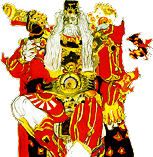
But for what they did, they did it well. FFIV in many ways could be considered a culmination of the things that made FF great. The Gestahl Empire had to navigate the tricky waters that flow between “classic” and cliché, and manages to hit all the sweet spots. There is a great feeling of oppression in the towns people where the soldiers meander in to drink their occupant’s booze and be assholes by blocking walkways for no particular reason. The empire is as uncompromising evil as they come, with memorable scenes of betrayal and mass murder. And Gehstal himself has little to no redeeming or even interesting in any way, he’s just a huge unattractive jerk that finally gets what is coming to him. It is easy to hate the Empire and therefore easy to empathize with the Returners as a whole, so mission accomplished.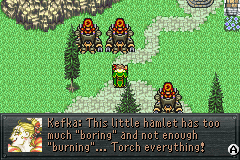
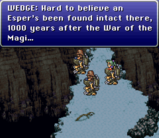
The Emperor maintains a theme of awkward tension between magic and technology that Final Fantasy will never get away from. This relationship results in the creation of some of the more popular characters in Final Fantasy, Magiteck Knights Celes and Kefka. In probably the most extreme case , The Espers are exploited and massacred for the Empire’s own need for conquest.
That being said, it is still eclipsed by everything else going on with the story. The empire is not as nearly fascinating as Kefka’s insane domination, or as the rebellion group they inspired, so it’s not surprising that it would not outlast either. In the end it’s easy to praise it for being what it is, another well hated tyrannically kingdom, and then move on to better, more evil things.
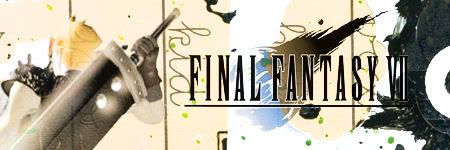
IV.A. Final Fantasy VII
I will not even pretend Final Fantasy VII will not get the bias here, being my favorite final fantasy and the one I am most familiar with. Shinra Electric Company Inc. is my favorite “villain” in all of Final Fantasy, and in my opinion, deserves an iconic legacy the way that Umbrella Corp, Fontaine Futuristics, or Silent Hill has, a complex yet easily recognizable figure in gaming history that is so well realized that it may just as well be a character in of itself.
---Shinra, as well as the entire planet, was a step in a different direction compared to previous Final Fantasies, going from castles and empires, to a dirty metropolis and global energy corporations.
Its political supremacy was second to its ambition for economic domination. Shinra Corp was complex compared to the Gestahl Empire, it evolved throughout time (first being a weapons company, then changed its tactics from one of Money under the first president- to one running through fear through Rufus), it provided much needed goods (electricity), and it had multiple levels of bureaucracy and different departments (urban development, space exploration). But that didn’t make them any less evil. It‘s unabashed corporate greed becomes a main instigator of conflict in the world, leading to war, poverty, and unethical scientific experimentation. It could be considered that Shinra is the real true villain of FFVII, as Shinra is responsible for the hate that led Sephiroth to insanity
Technology and nature are usually at conflict in Final Fantasy, but here it is impossible to get away from. Environmentalism is a central theme in Final Fantasy VII, to the point that the planet is given a certain amount of sentience- and the players can hear it cry in pain throughout the story. Even when the focus is shifted to stopping Sephiroth- we never truly get away from the environmental aspect and it is reinforced with subtle hints.
Leaving Midgar you can see the impact it has on the surrounding area where vegetation has cease growing. Going to Junon you can talk with the locals and listen to their frustration about the pollution of the sea. Even in the ending, players are left questioning their relationship toward the planet, because it is hinted that if Holy moves- the planet will decide whether or not to get rid of humans all together and spare itself more pain.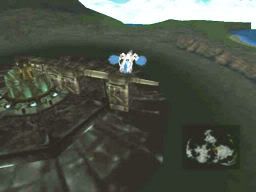
Shinra’s political make up is also strange beast in of itself. It is not exactly a political organization, Midgar has its own “government.” But it’s militaristic and economic power leads them to be the puppeteer regime, the most obvious example being when Cloud meets the Mayor of Midgar, who laments about his lack of power. Shinra is also proficient in being able to get other autonomous nations to do what they want, providing energy and inspecting them whenever they wish to, or going to war with Wutai over placements of mako reactors.
Shinra is most different from VI in the way it actually produces a viable, and it’s this aspect that leads into the dependency issue. Shinra is a terrible company for sure, but many people respect, or at least greatly rely on, mako energy and therefore Shinra. Players explore this controversy and dependency is the town of Kalm, the only town you can openly argue people’s views on Shinra and mako energy. In my opinion this exploration of the complex relationship Shinra has with the people is what makes Kalm a significant part of the story- even more than Cloud explaining his iteration of the Nibelheim incident. -
We can hardly blame the NPCs for their ignorance, when fandom themselves have lingering affection towards Shinra. Shinra is an oddball organization story-wise. It was so complex that there were facets of the company that were actually likable. The Turks, for example, are a fan, and judging from their roles in BC and AC, and creator favorite. We are quick to forgive the them committing mass murder in Sector Seven, and accepted the excuse of “ it’s just our job, no hard feelings.” Shinra also had the space development department the Urban Development Team that for the most part, was respectable.

Oh, yeah, I remember you, teehee. You only bombed a pillar, destroying the entire sector including my home, killing my friends, my neighbors, and countless of innocent people, then blame everything on us. How are you doing? Cloud? Sure, I'll call him right away! <3
Shinra also created an aspect in Final Fantasy that is rarely explored, class tensions. Shinra’s focus on economic growth was done so at the expense of other towns and entire groups of people, leading to bitter and dejected populations with little to no control over their fates. When we play through Midgar, we only get to play through the slums because it is the only Midgar that is truly important for the theme of FFVII, the struggle of the underprivileged. We do not need to explore the upper plate because we only really need to know it exists, the place where the downtrodden will never be able to rise to, always hanging above their heads. This poverty-wealthy dynamic is repeated on the next continent, where miserable and deprived North Corel is sandwiched between the escapism of Cos De Sol and Gold Saucer, and the population is every bit of miserable and unable to progress. 
IV.B Final Fantasy VII Influences
Shinra‘s jump from imperialistic empires to mega corporations was not without its inspirations. This change can be simply explained by its early attempt to modernize the setting, considering the game was originally set in New York. But it also is strongly affected by its own history and the current events at that time of production, 1995-1997.
Shinra Corp draws a heavy comparison to the oil conglomerate Shell and the accusations about its involvement in Nigeria. Crtiics charge Shell with the perpetuating human rights, environmental health, and economic justice violations. The most notable case occurs the same year as the start of FFVII’s production, 1995 case in which the Nigerian dictatorship hung 9 environmental activists for speaking out against Shell. Since oil makes up a huge chunk of Nigeria’s income, Shell’s activity in Nigeria is one of the primary reasons that the dictatorship stays in power- thus many charge Shell with having direct influences on the political nature of Nigeria, despite not being a formal political entity.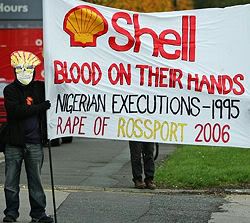
This comparison makes it all the more ironic with the introduction of oil as the next major energy source in Case of Barret. I don’t believe that this was a coincidence on the writer’s part, especially since it was released sometime after 2005 and the fall out of the Iraq war, where oil controversy was still a hot topic. The story even gives a warning that as long as people aren’t too greedy, or misuse it, then it should work out. In my opinion, this is as much cautious as there is hope with the reuse of oil, Advent Children makes a point of saying that troubles will never truly go away. Sephiroth hints that he will never truly disappear, interviews respond that Cloud and Tifa will always have snags in their relationship. But the point is that even when the worst will inevitably happen, good does eventually persevere, and this theme can be expanded to cover the oil debacle in FFVII.
While Japan‘s history with environmental stance can be traced to something as fundamental as shintoism, but it was the environmentalist political movement in Japan didn’t start until the 60s and 70s. To specifically consider the timeline I gave (mid 1990s), Japan saw a lot of environmentally based political movement in the 93/94, including the passing of the Basic Environment Law and National Action Plan for Agenda 21. Most notably, 1997 Japan was the country where the prominent international agreement Kyoto Protocolwas finalized and adopted, a famous global initiative in environmental politics- the protocol finding its roots as early as 1995’s Berlin mandate.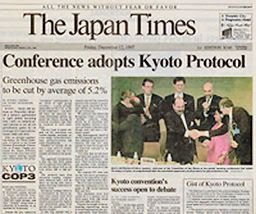
In 1997, East Asia went through a severe economic crisis that many feared would turn into a global meltdown. Japan escaped lightly compared to its surrounding neighbors, but the incident was so massive that it would have a lasting impact on how people viewed the economy in general. Although Japan was barely affected, Japan had its own economic crisis. After a housing bubble popped in the 1989/90, Japan suffered through stagnant economic growth that became infamously known as the “Lost Decade“.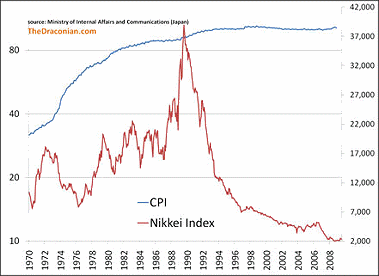
Junon, Gongaga, and Wutai also drew from frustrations. Going with the theme of environmental disaster, Gongaga’s incident could be inspired by Chernobyl disaster, the famous nuclear reactor meltdown in the 1980s. Closer to the production date, a nuclear incident in Russia occurred in 1993, although no injuries were recorded. Wutai is likely a reference to the increasing frustration of Japan’s perceived loss of culture and national pride. Junon may also be a direct reference to Japan’s own environmental frustrations, if not it is an extreme coincidence that one of the towns that heavily emphasize the dangers of pollution happen to be a fishing town, a prominent industry in Japan.
None of these point can be directly compared to FFVII’s case. But it does however, paint an atmosphere to showcase a growing disillusionment and frustration with the economy and the fears for the environment.
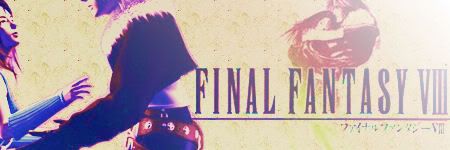
V.A Final Fantasy VIII
This FFVIII’s entry is interesting because while once again we have the primary antagonistic institution as an invading empire. Unlike previous Final Fantasies, though, this invading empire is not in any medieval context. Instead this game is set in a considerably more modern era, like FFVIII. This is important because it brings a sense of identification that medieval games can not replicate. We expect countries in the medieval era to try and take each other over, history lets us watch these events with an emotional step removed. However, place these conflicts in a more modern setting, and players draw a lot more parallels to current times.
Galbadia is an invading force, composed of mostly a bunch of jerks who enjoy doing things like throwing you in jail and beating you up. But for the most part, that’s pretty much it. There are plenty of times that show just how amoral the Galbadia's army (ie. Balamb’s takeover, the missile attacks at Trabia) but I felt it lacked that pure evil experience that FFVI's Empire inspired. It definitely doesn’t lack in their overly aggressive history so you never had any conflictions about attacking them, but there is nothing so astonishing that it would live in infamy in the players mind. They didn't poison a town and kill all your family, or rebuild your burned down village and fill it with employees to avoid bad publicity. It’s just a bad place that does bad things.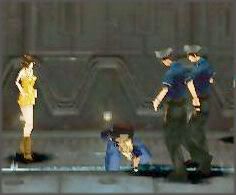
One thing I will commend it for, it made a hell of a battle sequence. The War between the Gardens was hectic and exciting. Visually, running across the battlefield made for one of the most memorable parts of the entire game. Galbadia makes for a fun opponent to engage, just not a necessarily intimate one. Although the player gets to fight for the Forrest Owls, and gets to wander the oppressed Timber, it still doesn’t quite lend itself to the atmosphere of the previous entries.
FFVIII especially enjoys painting things with ironic brush. We know that from her speech, Ultimecia encountered harsh persecution throughout her life, which would explain her descent towards malevolence. But it is hinted that it is her actions through the game is what caused the wave of persecution she struggled through. Galbadia has its own, if a little more obscure, example. Galbadia may be a cruel military dictatorship imposing domination on countries that don‘t deserve it, but this may never have even started if it wasn’t for Esthar going on its own world domination tour. The end result of Esthar’s tirade was Galbadia giving great amounts of power to their own government and them quickly militarizing and conquering other countries for self defense. Eventually Esthar stopped, but Galbadia never did. Therefore the most important city allied to Squalls group is the original instigator of the going conflicts in the game.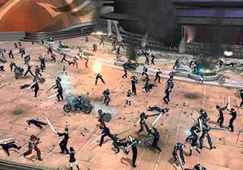
V.B Final Fantasy VIII Influences
Military occupation is not a new theme in Final Fantasy. What made this new though, is that this occupation was taken in a modern, if a lot more sci fi, setting. Like I said before, there's a degree of separation in the player's mind when we play a game set in the medieval times, we expect conquest. Giving a contemporary view brings the idea of occupation much closer to home.
I know this may be a contentious opinion, but I always felt that compared to other AAA western games (excluding games that include Nazis), Final Fantasy seems to include more stories centering around rebelling against occupation; Gears of War, Halo, Mass Effect, Dragon Age, Fall Out all make no or only passing references to the people repressed against military occupation. Of course I could be wrong because of my limited scope, games like Half Life 2 and the up and coming Homefront game all seem to address these issues. Still, even with these games, I feel that the focus and emotional themes are still very different (ie, US still in war and Half Life 2’s focus is more on its dystopian future setting)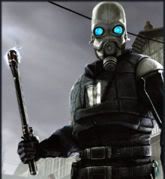
The reason I I bring this all up is because of how I perceive their influences. Occupation is one of those odd things in history where it is literally everywhere and an ongoing political issue, inspiration for occupation could be found everywhere. In the 90s there are plenty of instances of occupational tension, the Croation War of Independence, China, East Timor. But common sense dictates that they drew from their own history.
Japan both occupied and been occupied in somewhat recent history. Or at least, recent enough that their neighbors have not forgotten, (for example, as recent as 2008 has Japan paying reparations for Korean comfort women, women forced into sexual slavery, something that Japanese government initially denied being involved with). The US led occupation of Japan is also somewhat contentious, it is often praised for being a relatively painless occupation when compared to the traditionally more violent experiences in history, and what that actually lead to democratization, but is still with accusations of rape and other forms of controversy. This is why Final Fantasies, games that are often portrayed as some of the most Eastern styled story telling games that are popular in US, are so fascinated with the idea of occupation.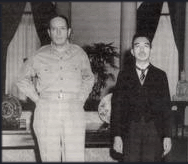
One can also try and break down the conceptions of Gardens. Garden is technically a private military corporation. So they’re like Blackwater, but with more love and speeches about friendship. Mercenaries do have a place in Japan’s history, but for the most part there isn’t much to draw parallels too. It is more obvious to take the creators at their word and accept that the concept of Garden comes from the popular school days anime genre.
End of Part I, Next time (hopefully) includes FFIX, FFX, FFXII, and FFXIII
Last edited:
